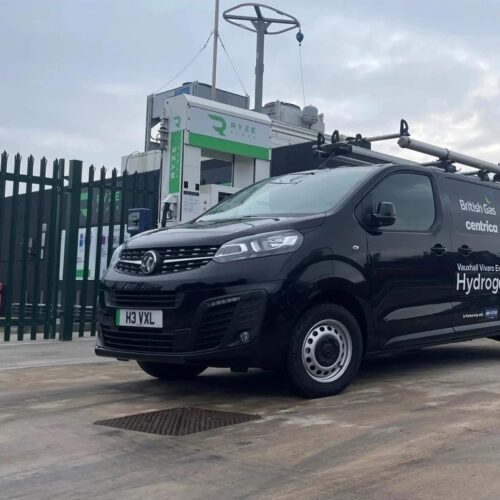Current± speaks to Matthew Adams, transport policy manager at the Association for Renewable Energy & Clean Technology (REA), about how the existing barriers to mass EV adoption can be removed.
The electric vehicle market has been on something of a rollercoaster ride over the past 12 months. On the one hand, the Conservative government rowed back its commitment to the 2030 zero emission vehicle (ZEV) mandate, pushing it back to 2035 in September 2023. On the other, by February 2024, Labour had committed to restoring the 2030 target while looking like a safe bet for a general election win. That having come to pass, and with a firmer commitment to renewables than Sunak’s government was able to muster, the future for EV sales and EV infrastructure looks bright indeed once again.
In February, one in four new vehicle sales among the top nine manufacturers was an EV, but the UK lags behind the EV curve in one key area: infrastructure, with Cornwall Insights claiming the UK needs to more than double the current rate of charger installation to meet its 2030 targets.
With the newly installed Labour government prioritising renewables, it may actually be time for some cautious optimism for the EV faithful. Matthew Adams, transport policy manager at the Association for Renewable Energy & Clean Technology (REA), certainly thinks so. REA supports over 100 member companies, engaging with them and public officials to boost the rollout of electric transport infrastructure.
Adams sat down with us to discuss the most pressing issues facing EV policymakers and where he believes the industry must go next.
Grid connection and planning reform is needed to hit EV chargepoint targets
One of the key areas in which policy has fallen short of current demand is grid connections, especially with the patchwork of standards for the UK’s various Distribution Network Operators (DNOs). “We have this huge target of 300,00 chargepoints by 2030 to hit, and yet some of the key policy changes everyone around the sector has been calling for haven’t happened,” says Adams. REA members trying to install chargepoints have found that inconsistent planning regulations are leading to unexpected cost spikes for projects. Adams says members have told him, “if you put in a connection request for one side of a street, the DNO does not always look to find the cheapest connection point in that area; this adds costs, and sometimes, costs are unfortunately prohibitive.”
However, the new Planning Bill, revealed in the King’s Speech earlier this month, could offer some much-needed respite. Adams says he is “very excited” by the potential of the new legislation to accelerate chargepoint rollout, saying he hopes reforms “will be packaged as part of the government’s response to both the street works licencing and permitted development rights consultation. We need to scrap a lot of the current street works licensing regime and move CPOs in line with other operators of essential services such as gas and electric, which have a far more streamlined process for street works.”
Funding needs to be made simpler and speedier
According to Adams, current UK funding systems are not meeting their full potential due to overly complex and ever-shifting regulations. He points to the Local Electric Vehicle Infrastructure (LEVI) fund, a government scheme providing local authorities with funding for charging infrastructure, as one that has encountered “a host of problems” including direct procurement service issues, unclear regulations, and unfair awarding of funding. That last point has led to some grant money going to CPOs that previously won fully funded bids without going through a competitive LEVI tender, a move which Adams says is “very anti-competitive”. Adams argues simplifying LEVI and extending the November deadline for Tranche 1 would be a sensible course of action, adding that unlocking private sector investment in EV charging should be a focus for the new Labour government.
Another concern for the REA is the rapid charging fund. Adams notes that no funds have been released other than a comparatively small sum from the pilot fund.
The importance of the electrification of heavy goods vehicles is often overlooked in the pursuit of public charging infrastructure. Adams also believes more funding should be directed to schemes that further the rollout of eHGVs, such as the recent £63 million eHGV trial by Dynamon, funded by the Department of Transport. Without HGC funding infrastructure, Adams warns, “we will find ourselves digging up the roads and surrounding fields again and again if it’s even commercially viable to do so”.
Smaller commercial vehicles deserve a similar focus, says Adams, citing research from Field Dynamics, which predicts that vans will create more demand for energy from public charging than any other vehicle type by 2030. Ensuring the infrastructure is in place for goods vehicles is a crucial consideration for the success of UK vehicle electrification. Meeting the demands of industry as well as sating private user’s demands will be a substantial challenge.
Learning lessons from abroad
Given EV momentum on the continent, upping the pace of the UK’s trajectory towards its EV targets may mean looking overseas to our continental neighbours. Norway, in particular, is frequently praised as an example of the impact of strong EV incentives, with “a huge focus on empowering the consumer to go electric,” according to Adams, largely driven by a combination of generous subsidies for EV owners and exemptions from city tolls and sales taxes on new EVs. Another key lesson from Norway’s success is its Right to Charge legislation. Adams suggests a similar policy would make it easier for UK EV owners to install chargepoints at rented properties, adding, “When a landlord can just say no, the easiest thing to do is to do nothing.”
“In Norway, landlords can only say no if the cost of doing so goes beyond a certain cost threshold. The chargepoint is paid for by the tenant, but the cost of obtaining the grid connection is paid for by all the tenants, and the reinforcement covers all the parking spaces being able to obtain a connection in future, so long-term tenants can also benefit.”
Keen to learn the lessons of other countries’ successes (and failures), REA is set to begin research to uncover overseas schemes that could benefit UK EV owners.
Accessibility: considering everyone in reform plans
A key factor to consider with any plan for policy reform, including EV policy, is ensuring that any benefits from changes are accessible to everyone in society, regardless of disability status, something Adams argues is not currently the case with UK EV policy.
“If you’re disabled, there are problems with charging in public. Improving accessibility for wheelchair drivers should become a real focus for anyone operating in the public charging realm.”
The road ahead
It’s early days for Labour, but the signs are positive for the EV industry. Whether the new government can deliver on its promises and deliver on the ZEV mandate remains to be seen, but key to that success will be an EV infrastructure policy that simplifies the route to market for CPOs and assesses projects on a case-by-case basis to avoid the exploitation of funding loopholes by less scrupulous operators.
Equally, much is often made of first-mover advantage. In the UK’s case, our relative lack of progress on EV infrastructure means there are myriad opportunities to learn from our European cousins to avoid costly policy errors.
But what the UK EV industry wants more than anything else right now is progress. Adams sums it up by saying, “the message we are getting from our members is let us get on with it.”





